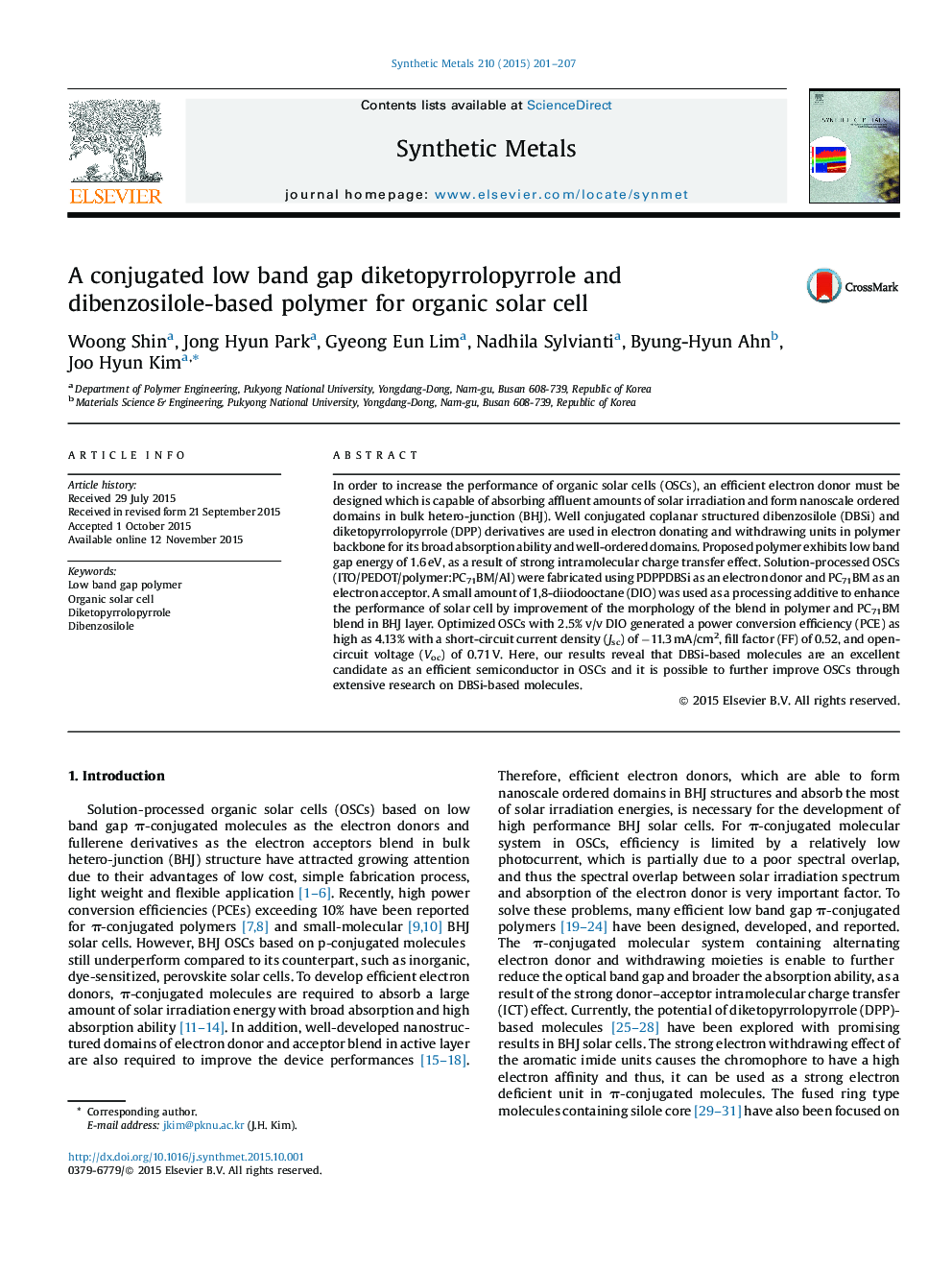| Article ID | Journal | Published Year | Pages | File Type |
|---|---|---|---|---|
| 1440317 | Synthetic Metals | 2015 | 7 Pages |
•Low band gap polymer based on diketopyrrolopyrrole and dibenzosilole.•The band gap, HOMO, and LUMO of the polymer 1.6, −5.3, and −3.7 eV, respectively.•PCE of the device based on the polymer and PC71BM exhibits as high as 4.13%.
In order to increase the performance of organic solar cells (OSCs), an efficient electron donor must be designed which is capable of absorbing affluent amounts of solar irradiation and form nanoscale ordered domains in bulk hetero-junction (BHJ). Well conjugated coplanar structured dibenzosilole (DBSi) and diketopyrrolopyrrole (DPP) derivatives are used in electron donating and withdrawing units in polymer backbone for its broad absorption ability and well-ordered domains. Proposed polymer exhibits low band gap energy of 1.6 eV, as a result of strong intramolecular charge transfer effect. Solution-processed OSCs (ITO/PEDOT/polymer:PC71BM/Al) were fabricated using PDPPDBSi as an electron donor and PC71BM as an electron acceptor. A small amount of 1,8-diiodooctane (DIO) was used as a processing additive to enhance the performance of solar cell by improvement of the morphology of the blend in polymer and PC71BM blend in BHJ layer. Optimized OSCs with 2.5% v/v DIO generated a power conversion efficiency (PCE) as high as 4.13% with a short-circuit current density (Jsc) of −11.3 mA/cm2, fill factor (FF) of 0.52, and open-circuit voltage (Voc) of 0.71 V. Here, our results reveal that DBSi-based molecules are an excellent candidate as an efficient semiconductor in OSCs and it is possible to further improve OSCs through extensive research on DBSi-based molecules.
Graphical abstractA π-conjugated polymer (PDPPDBSi) based on diketopyrrolopyrrole chromophoric and dibenzosilole units exhibits low band gap energy of 1.6 eV and deep HOMO energy level of −5.3 eV. A high power conversion efficiency of 4.13% is achieved for PDPPDBSi:PC71BM blend-based bulk hetero-junction organic solar cells with 2.5% v/v DIO as a processing additive.Figure optionsDownload full-size imageDownload as PowerPoint slide
